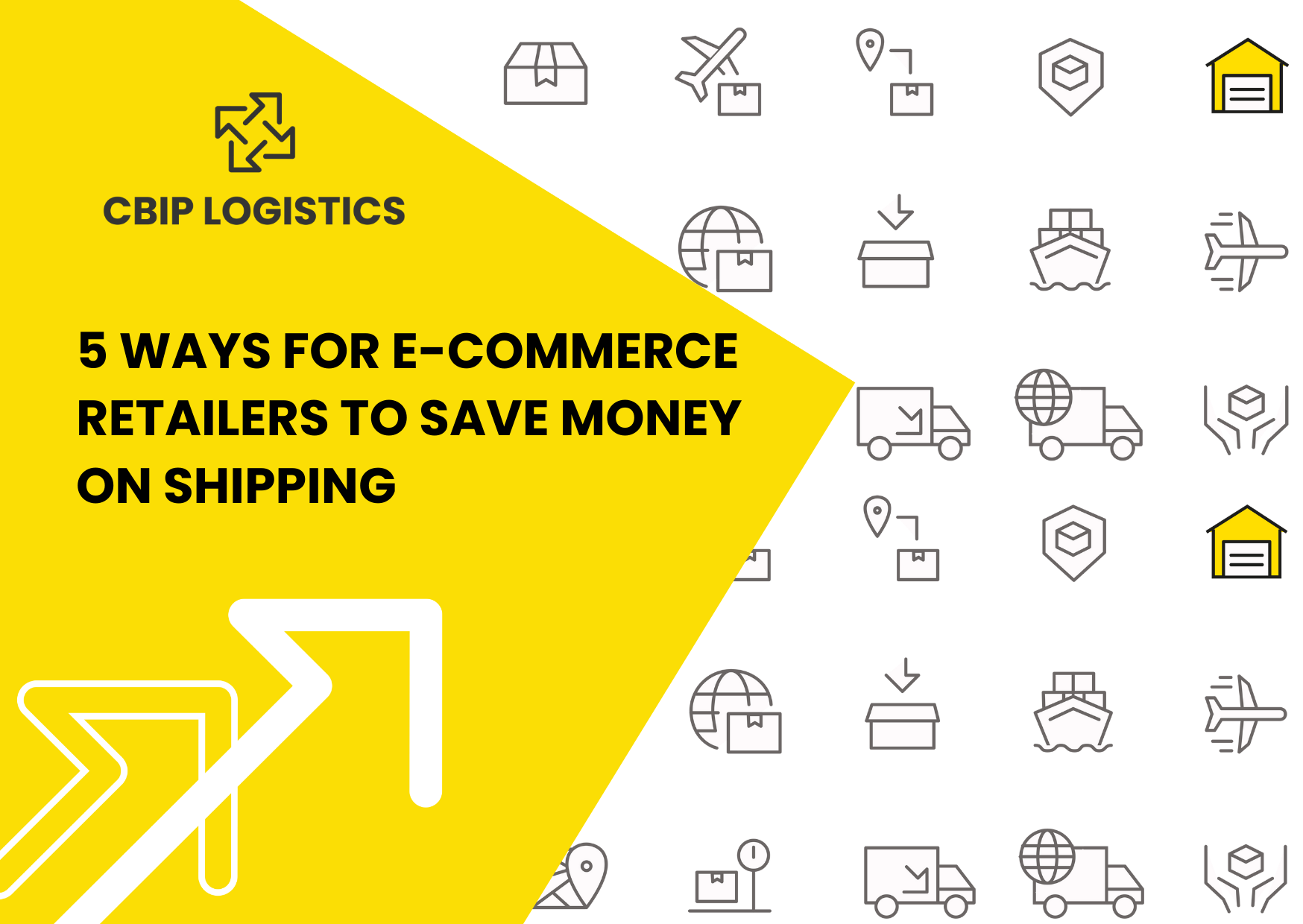5 Easy Ways for E-Commerce Retailers To Save Money On Shipping

Table Of Contents
- 1. Right-size your packaging
- 2. Choose your shipping method strategically
- 3. Double-check to avoid address errors
- 4. Remotely located customer? Watch out for shipping surcharges
- 5. Work with an experienced logistics provider
- Want to see how working with a 4PL can help you cut shipping costs? Check in with CBIP
It’s a challenging time for e-commerce business owners. In 2023, we’ve seen some of the largest carrier rate jumps in history — and that’s not even including peak season surcharges.
At times like this, it's more important than ever to keep a close eye on how much you spend on shipping. So, how can you ensure customer receive their goods with peace of mind—and save yourself time and money?
We’ve got five solutions to help keep your shipping costs down and customer trust up. From packing to address accuracy to partnering up with a provider, follow this guide to make sure you can save as much as possible for your future shipments.
Read About CBIP’s Global 4PL Logistics Services
1. Right-size your packaging
The smaller and lighter the shipment, the less you pay—it’s as simple as that.
Most carriers charge by both the weight and dimension of the package, so choosing the box that accurately suits the size of your item can save you a lot of money.
Your goods should also be well packaged; after all, they will be traveling via a mass package transport system.
If you outsource your fulfillment to a 3PL, talk to them about ways your orders can be packed more efficiently. Your in-house team or outsourced provider can do things like:
- Use recycled poly mailers or envelopes for lighter orders that are not fragile, such as clothing
- Create custom boxes and mailers to fit your items more snuggly
- Fill small spaces left with recycled or recyclable cardboard-based infill
Finding a precise fit for your orders can be a challenge, but newer automation technology has been making things a breeze.
For those who want a high-tech approach, automation packaging systems are making right-sizing e-commerce packaging a lot easier,
Some systems are now able to automate the entire process, from scanning and weighing your order, to automatically cutting and shaping the perfect box, placing the item in the box, printing your logo, and affixing the shipping label.
2. Choose your shipping method strategically
How quickly do you need it to arrive? Although customers value fast shipping, studies show that free shipping is still the top priority.
Offering shipping that is free and fast is certainly attractive, but unless you are Amazon, it isn’t usually financially practical for retailers. Instead, give your customers the option to select express or saver, and put the cost for fast shipping in their hands.
Just make sure to have a clear line of communication with customers and ensure that their expectations line up with the given shipping circumstances.
3. Double-check to avoid address errors
Incorrect addresses can cause problems with the carriers, and you may wind up getting charged extra fees for re-delivery, address correction, or return-to-sender.
There are apps and software you can use to check the validity of your address. However, you can cut way down on the margin of error just by using these guidelines:
- Use capital letters
- Don’t use more than five lines
- Write the complete return address
- Avoid using non-address numbers like phone numbers in your address
- For international shippers: Pay attention to address guidelines in your recipient’s country
The last and most important tip? Double-check your address and make sure every detail is correct! This means checking address formats and consulting a shipping professional if you’re unsure.
4. Remotely located customer? Watch out for shipping surcharges
Shipping is truly global these days, with customers in remote and previously inaccessible areas now able to order from most e-commerce sites.
However, just because you can get packages shipped anywhere, doesn’t mean it will cost the same for everyone. If you are sending to an address outside the normal delivery areas, there may be a surcharge.
As an e-commerce retailer, you’ll need to follow your delivery locations with a careful eye. Check which carriers cover these areas as a standard delivery area to avoid unexpected fees. If you are shipping to a surcharge area, often the best solution is to use a combination of the carrier you work with and a local carrier to reduce shipping costs.
RELATED: 5 Must-Dos When Considering a 3PL Provider
5. Work with an experienced logistics provider
Partnering with an experienced logistics provider like a 4PL means that they can look at your business to see if you are over-paying for shipping, and they can rate-shop to get you the best prices.
Since many work with a high volume of shipments, some providers may even be able to get you special discounts with carriers.
Plus, working with a global 4PL means you have access to their network of logistics providers. That means if long-distance shipping rates are eating away at your margin, you can try storing inventory and fulfilling from a secondary location to cut last-mile costs!
Want to see how working with a 4PL can help you cut shipping costs? Check in with CBIP
At CBIP, we’ve worked across the globe to ensure clients get the best rates and most efficient services in their shipping.
As a global fourth-party logistics provider (4PL), we are well-versed in handling the finer points of shipping that often get lost in the mix — insuring shipped goods, adapting to more suitable warehouses, and calculating location-specific charges.
Get in touch today for a free consultation on how we can help you cut unnecessary shipping costs and run your logistics more efficiently.






